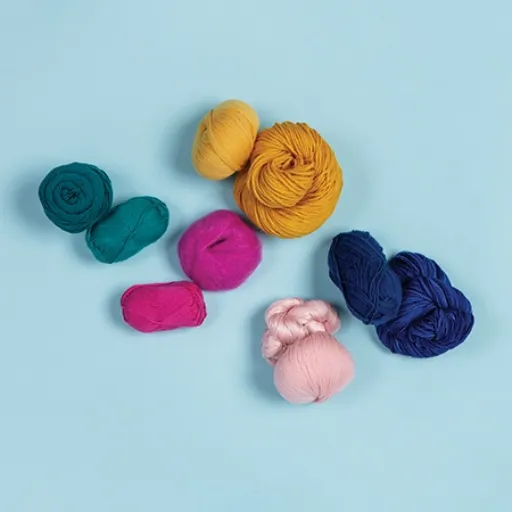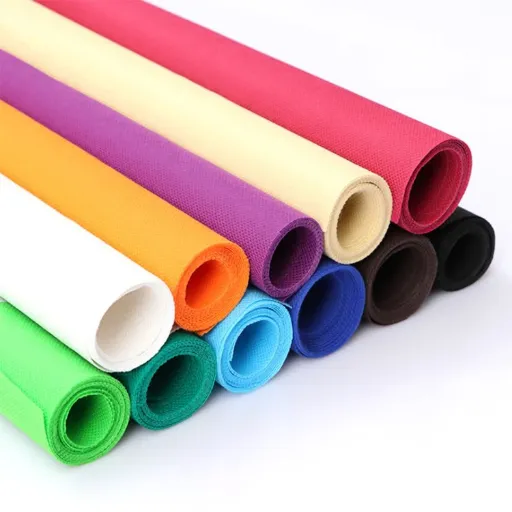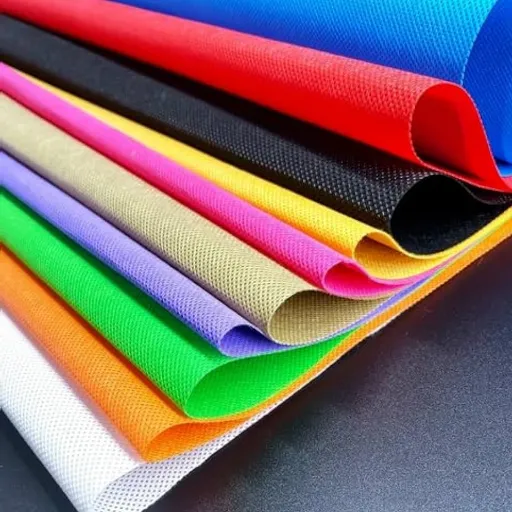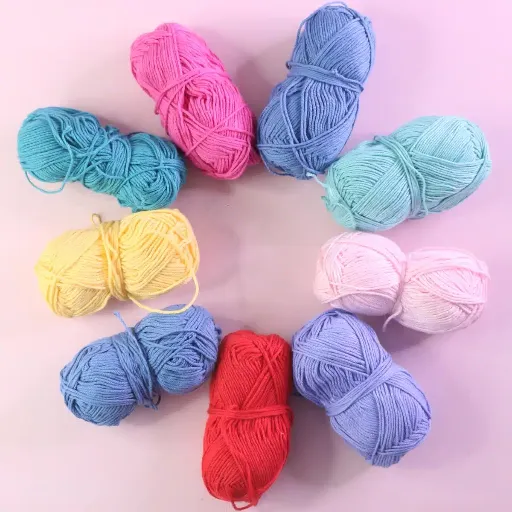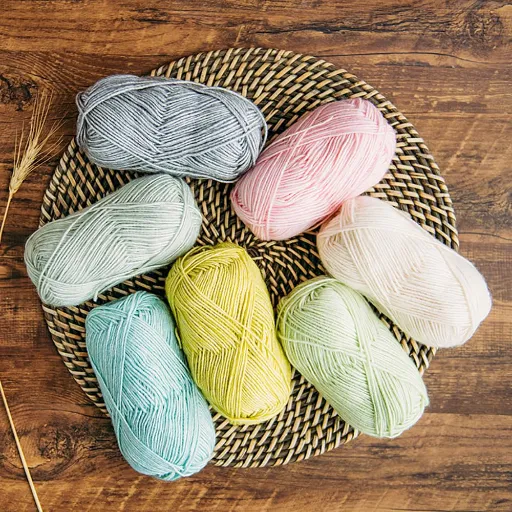Synthetic fibers, especially acrylic and nylon, go hand in hand with the popular choices: How do these two truly differ? Both possess versatile properties under which they can be used for several applications clothing to home furnishings. Yet due to their distinct attributes, they are best suited to utterly different applications. In other words, whether you are a designer, producer, or just a savvy consumer, comprehending some basic areas related to acrylic and nylon will enable you to make informed decisions regarding their durability, texture, and cost, among others. This concern attempts to pit one fabric versus the other to better comprehend and identify their second-best advantages and disadvantages to a better price or best use for your utmost requirement.
Introduction to Synthetic Fabrics

The Synthetic Fibers
Synthetic fibers are man-made textile materials created through chemical processes involving polymers. Unlike their natural counterparts, natural fibers are derived from plants or animals, synthetic fibers are engineered for specific qualities such as durability, elasticity, resistance to water, or resistance to stains. Some commonly found synthetic fibers in the textile world are acrylic, nylon, polyester, and spandex. They all have different applications because they differ in physical characteristics.
Acrylic fibers are lightweight, offer warmth, and simulate the feel of wool; they are, hence, mostly used for sweaters, blankets, and outerwear. Since acrylic was designed to resist deterioration by sunlight and chemicals, it can sometimes be less durable compared to other synthetics. Nylon, on the other hand, is famous for its great strength, superior elongation, and abrasion resistance. Unfortunately to describe its preferred use ranges from activewear to ropes and nets. Anyhow, both acrylic and nylon come with advantages such as rapid drying and being economical in price, but there are marked differences as to softness, breathability, and lifetime.
Choosing between synthetic fibers depends on the future use of the material. Comfort, performance, environmental factors, and maintenance are a few issues that will help your decision. While synthetic fibers have changed the textile world due to their flexibility, balancing these qualities with sustainability today is a tough issue since usually a negative environmental impact arises during production and disposal.
Acrylic and Nylon: A Brief Look
Generally two sets of synthetic fibers are involved. They have unique properties plus they are used in other ways. Properties that make acrylic soft, warm, and wool-like attach a set of applications consisting of textiles used for making sweaters, blankets, upholstery, etc. Lightweight and in a way resistant to moth attacks, acrylic will retain its color for a long period; however, it is less durable than some other fibers and can easily pile.
Nylon is extremely strong, elastic, and tough on one hand. On the other hand, it is a fiber used for making products that require high strength, including ropes, fishing nets, and active wear. It resists abrasion and has excellent resilience that makes it an excellent-value fiber to give to those items that are getting to move in their usage or are getting stressed. It can also hold moisture and sometimes feel less breathable than some natural fibers or alternatives.
While both acrylic and nylon have their own sets of benefits, one very big issue is their impact on the environment. The production of acrylic involves chemicals that can be detrimental to flora and fauna, while the manufacturing process for nylon releases nitrous oxide, a very potent greenhouse gas. The clad polymers also add to microplastic pollution during their life cycle. Therefore, consumers must weigh the factors of performance, comfort, and sustainability when choosing between these two materials.
The Role of Petroleum in Fiber Production
Yet at its core, petroleum is a source from which most synthetic fibers are derived and before the transformation into a textile, they exist as an intermediate product. Thus, some common petrochemical-based synthetic fibers include polyester, nylon, and acrylic. Their polymer is obtained through polymerization, where small molecules are chemically joined into long chains that will serve as the basic elements of their material.
Use of petroleum in fiber production brings in sustainability and environmental concerns. Extracting and processing crude oil contributes not only to greenhouse gas emissions but also requires extensive energy resources. Furthermore, synthetic fibers are produced from petrochemicals. A non-renewable resource signifies that raw materials are finite and cannot be replenished naturally at a sustainable rate. Such dependence suggests that alternatives must be sought and processes improved to minimize the impacts.
In contrast, petroleum-based fibers earn universal acceptance due to environmental concerns; their affordability, durability, and versatility achievements are undeniable. This gives them opportunities, from clothing to industrial uses. Yet a greater awareness of the environmental footprints has created an environment for promoting the evolution of environmentally friendlier alternatives such as biobased fibers and recycling techniques less dependent on virgin petroleum resources.
Acrylic vs Nylon: Physical and Chemical Properties
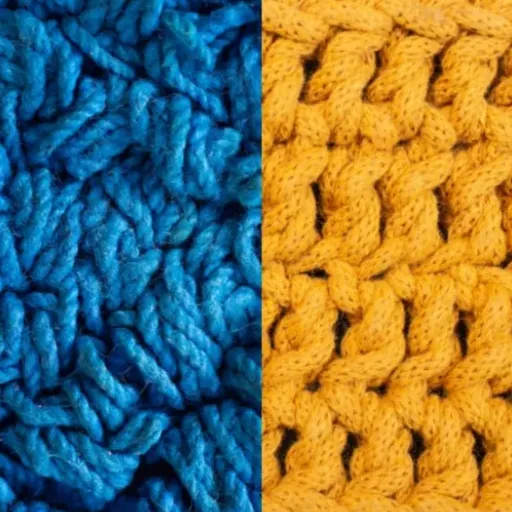
Composition and Structure of Acrylic
Acrylic fiber is a synthetic polymer made from acrylonitrile, which serves as the basis for the structural framework of the polymer itself. Usually, these fibers result from the polymerization of acrylonitrile, with tiny quantities of other compounds such as vinyl acetate or methyl acrylate, to impart flexibility and to improve dyeability. This composition gives the acrylic a feel that is lightweight, soft, and somewhat woolly.
The structure of acrylic fibers comprises long polymer chains, which lend strength and elasticity to the fibers. Acrylic fibers are resistant and maintain their shape even after continuous use. Furthermore, the fibers are thermoplastic; they soften upon heating. Hence, processing and manufacturing in various forms become easy. This adaptability in structure has given acrylic fibers wide applications from garments to upholstery.
One important characteristic of acrylic is its chemical resistance. It will stand exposure to an array of chemicals, sunlight, and environmental factors making it ideal for outdoor applications. It is, however, less thermally resistant than some other synthetic fibers. Considering all these physical and chemical properties, acrylic becomes an all-around material that gives a compromise between cost and performance.
Composition and Structure of Nylon
Nylon is one of the synthetic polymers of pthe olyamide family. It has a chemical structure wherein identical units are linked together by amide bonds, which are the result of a condensation reaction between diamines and dicarboxylic acids, or between lactams. Such composition renders it a strong, durable, and flexible material, much used for textiles and industrial purposes.
Molecularly, nylon is made up of long chains formed of straight units. This allows the chains to align with each other when tension is applied. This alignment allows for the formation of strong intermolecular hydrogen bonds that grant nylon a higher tensile strength and greater elasticity. Abrasion resistance is also found in this material to an excellent degree, which renders it highly competitive for applications such as ropes, parachutes, and tires.
Nylon features such properties as resistance to wear, chemicals, and moisture, although it can, in minute amounts, absorb water, and this might slightly affect its mechanical properties. It can also be dyed and is light in weight, with only a few features that make it amenable to uses both functional and aesthetic. Because of its strength, versatility, and ease of processing, Nylon has become the most widely used synthetic fiber.
Comparison of Fiber Properties
When compared against nylon and acrylic fibers, some key differences arise, of course, that affect the applications, areas of durability, and performance under certain environmental conditions. Presented below is a detailed comparison of these two synthetic fibers:
| Property | Nylon | Acrylic |
|---|---|---|
| Strength and Durability | Highest tensile strength and durability. Can withstand excessive wear and tear. Used in ropes, gears, and industrial applications. Excellent abrasion resistance. | Strong but less durable than nylon. Wears out more easily. Not suitable for heavy-duty applications. Lightweight with wool-like qualities. |
| Elasticity | Higher elastic property. Stretches and recovers well without permanent deformation. Ideal for hosiery, sportswear, and flexible materials. | Less elastic character. Maintains shape but can deform if stretched excessively. |
Durability and Maintenance of Acrylic and Nylon
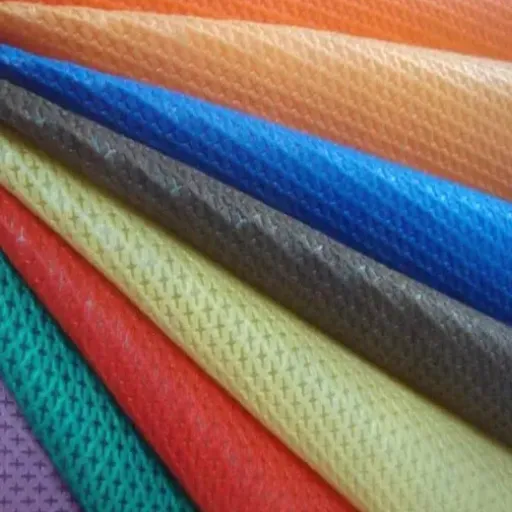
Wear and Tear Resistance
Nylon is popular for its unparalleled resistance to wear and tear. Being a polymer with high tensile strength, it has durability over long periods of usage without incurring much damage. Due to this strength, nylon serves best when rugged materials are wanted: outdoor gear and industrial components that undergo constant stress and friction.
Conversely, acrylic has fair wear resistance but is inferior in durability to nylon. It tends to get pilled and surface-damaged with time, more so in adventitious conditions of abrasiveness. This consequently makes acrylic more suitable for harder-soft uses like clothing and decorative items where a lot of wear isn’t considered.
When prioritizing the total longevity, nylon remains a stronger and more reliable material for long-term use. Yet, acrylic comes with its own merits, such as being lightweight and having a certain softness, which makes it preferred for some applications. It thus lies on the end-user to pick which of the two depending on the application intended and wear resistance needed.
Cleaning and Care Requirements
Regarding cleaning and care, nylon and acrylic are not alike in their maintenance requirements; hence, it is important to know about these requirements to help safeguard the nylon fabric in service.
Nylon:
Nylon is a very durable type of fabric that withstands frequent washing and wear. It resists shrinking and frequently retains its color over time. It is advisable to hand-wash or machine-wash nylon in cold or lukewarm water using a mild detergent. Do not dry on high heat; it is best to air-dry or tumble dry on low. Nylon has static issues, so it is best to use a fabric softener along with the drying process to prevent static buildup.
Acrylic:
Compared with nylon, acrylic requires slightly more care when it comes to cleaning. Normally, acrylic would be washed in a machine, although care must be exerted to use only cold water in gentle cycles to preserve its softness and shape. High temperatures during washing or drying must be avoided at all costs because acrylic stretches, shrinks, or sets out of shape: Air drying is preferred, but low-temperature tumble drying can also be done if necessary. The washing iron has its restrictions: when wrinkled, acrylic must never be ironed at high temperatures or it will melt; instead, let it cool on low or use steam.
Longevity of Fabrics
To preserve the fiber’s longevity, proper care must be taken, as each has its specific characteristics. Cotton, silk, wool, or acrylic fibers all react differently to washing, drying, or ironing processes. If one knows what any particular fabric needs, he will keep it durable, soft, and good-looking.
Improper washing procedures may damage the fabric. Always follow the label’s instructions for washing specific to a given fabric. Coldwater is often best for delicate materials or synthetics to prevent shrinkage or damage. You can also set your washing machine on a gentle cycle, so there is little agitation, and avoid harsh detergents that would strip the lint or protective coatings off a fabric. Also transgress the temptation to stuff the washing machine full, and the friction maybe harmful to the fabrics.
Drying and storage are both essential in fabric longevity. Thus, air drying is recommended for most fabrics to prevent excessive heat damage and distortion. Machine drying may be used very sparingly on low temperatures only. Drying and storage of fabrics should rather be in a cool and dry place away from sunlight to avoid fading and fiber damage. Sticking to these principles will give an extra boost to fabric life.
Applications of Acrylic and Nylon in Clothing Materials
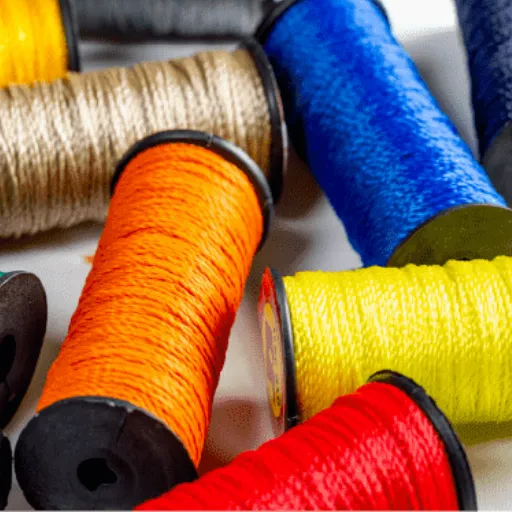
Common Uses of Acrylic Fabrics
Since acrylic fabrics are very versatile and are mostly inexpensive to make, they have been widely used in the textile industry. The following are some of the applications with a deeper look at their uses:
- Winter Wear: Acrylic is popular for making winter wear: sweaters, scarves, gloves, and socks because of its wool-like texture and high insulation. Acrylic warm clothing offers a price advantage and makes a good economic alternative to wool-based garments.
- Sportswear: Being lightweight and having the ability to wick moisture are acrylic fabric’s definite virtues for activewear. Activewear must withstand sweating; particularly it should hold against perspiration damage, and retain the shape of the fabric even after repeated washes, all of which acrylic does very well.
- Home Textiles: Acrylic is a common presence in household items such as blankets, upholstery, rugs, and curtains. Its durability and colorfastness ensure that these items will withstand wear and tear while retaining their vibrant colors over time.
- Outdoor Equipment and Accessories: It is suitable for awnings, outdoor covers and camping gear: acrylic being resistant to UV rays and all adverse weather conditions.
- Fashion Accessories: This colorful fabric is used to manufacture trendy items like caps, bags, and hairbands, also being able to imitate some other materials.
Nylon Yarn: Versatile Applications
Nylon yarn, widely credited with durability, flexibility, and resilience, is considered an essential element for various industries. Its capacity to endure high tensile force and resist wear from abrasion makes it suitable for demanding situations. Some such industries where nylon yarns are majorly employed include:
- Textile Industry: Nylon yarn changed the textile industry; it could imitate the feel and appearance of natural fibers but was much stronger. It finds applications in hosiery, activewear, swimwear, and lingerie.
- Carpet and Rug Manufacture: Nylon yarn stands to be among the most popular options for carpet and rug making owing to its abrasion resistance and resilience. Nylon comprises over 60% of all commercial and residential carpets of the world, mainly because it stands better to staining and keeps its shape more so than most of natural fibers.
- Industrial Applications: Nylon is a potential material for industrial yarns used in ropes, conveyor belts, fishing nets, and tire cords because of its strength and elongation property. It is believed that the global demand for nylon tire cord fabric will increase significantly along the lines of steady growth of the automotive industry.
- Sporting Goods: Nylon yarns in their essence are light and strong-the perfect combination for making tennis strings, parachutes, and camping equipment. Reformulations have even made them superior in UV resistance, especially suited to outdoor use.
- 3D Printing and Filament: As nylon filament has grown in popularity, it has showcased the versatility of the material. Nylon filaments are chosen to make parts that need to be strong, flexible, and durable.
- Automotive Industry: Nylon yarns are profitable for automotive upholstery, airbags, and seat belts because they offer great durability at a cost-effective option.
Delightfully put! As the ultimate representation of performance, it is definitely one that nylon yarn will keep being used in different fields. Flexibility will continue to make advances so that the demand for an item like this remains high in the coming global markets.
Innovative Uses in Fashion and Beyond
Both nylon and acrylic have across-the-board uses in fashion and other industries given the divergent traits of these materials. Nylon, being a synthetic polymer, stands well in durability and weightlessness and thus proves its worth in activewear, hosiery, and outerwear. It opposes abrasion extremely well and has good stretchability, thus realizing the goal of comfort and functionality when making clothes for motion and performance.
If and when contrasted with it, acrylic is meant to be a substitute for wool and has in fact that fine and soft feel. It is light in weight and warm; therefore, it is most suitable for sweaters, scarves, or blankets. In addition, acrylic is moisture-resistant and retains color excellently through the passage of time; thus, it remains very attractive for all kinds of apparel and home textile applications.
Both materials have their special advantages, so much will depend on their use. Nylon is mostly chosen for strength, elasticity, and durability; acrylic is warm and very soft. Knowledge about the characteristics of the two fibers enables designers and industries to make better decisions that will serve the consumer.
Environmental Impact of Acrylic and Nylon
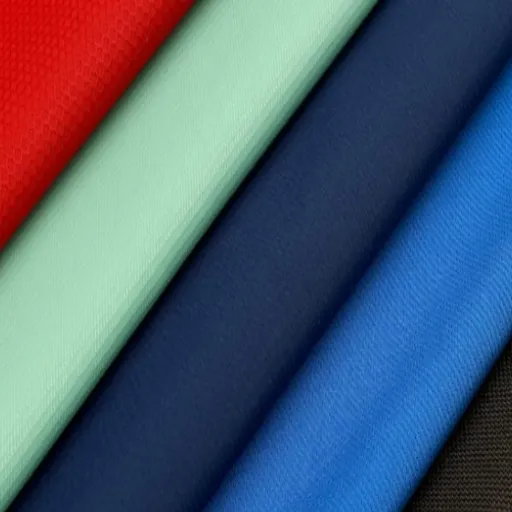
Carbon Footprint of Production
Production of nylon and acrylics thus have impacts on the environment, for they depend on petrochemicals and have energy-intensive processes. The release of greenhouse gases is said to be very high in nylon production, especially nitrous oxide, a gas with a global warming potential much greater than carbon dioxide. The chemical processes involved in nylon production also consume large amounts of energy, further adding to its carbon footprint.
Conversely, since acrylic production and processing depend on fossil fuels, they contribute a large carbon footprint as well. Acrylic fiber production relies on acrylonitrile: a toxic substance that must be handled very carefully and also causes environmental pollution by contaminating air and water. Besides this, the process demands large quantities of energy, which further increases the emission burden of acrylic production.
Efforts to make these materials more environmentally friendly continue to include recycling technology development and the creation of alternative, more sustainable fibers. Issues of environmental concern inherent in nylon and acrylic production establish the need for the search for green materials and greener processes while also instilling environmentally conscious consumption patterns.
Biodegradability and Recycling Problems
The biodegradability of nylon and acrylic presents major environmental issues. Nylon, being a petrochemical-based synthetic polymer, is strong, yet it does not fit into natural degradation processes. Similarly, acrylics are synthetic and do not degrade for years, decades, or even centuries in our environment. The absence of biodegradability has contributed heavily to the buildup of waste for long periods in landfills and natural ecosystems.
Recycling nylon and acrylic also faces considerable problems. The recycling process for nylon is very energy-demanding and often needs chemical treatment to degrade it into reusable materials. Moreover, certain types of nylon products turn out to be inappropriate for the existing methods of recycling, so very little of the material gets converted. Acrylic poses another set of troubles as it cannot be easily melted down and reformed. In other words, it usually needs mechanical recycling processes that lower the grade of the fibers.
Addressing these challenges, there have been developments in the recycling infrastructures and innovations. Novel technologies, like chemical recycling applied to nylon, are emerging that essentially break down a substance on a molecular level and reuse it. Similarly, research into biodegradable substitutes for conventional acrylic may set a long-term approach to this problem. However, the wide-scale implementation of such methods depends on greater investments being made and a willingness on the global stage to reduce reliance on non-biodegradable and hard-to-recycle materials.
Comparative Analysis of Eco-Friendliness
In terms of eco-friendliness, one must reflect on the processes involved in manufacturing these fibers and should remember their possibilities for recycling and their impact on the environment. Nylon is a synthetic fiber made largely from petroleum. The energy needed for nylon manufacture is large, and a greenhouse gas, nitrous oxide, is released in the atmosphere during the process. Nevertheless, developments in nylon recycling (chemical recycling) have enhanced its sustainability by allowing materials to be reused and thereby decreasing waste.
But from the other side, acrylic is another synthetic fiber made from petroleum and it takes more effort to recycle due to its structure. The manufacturing process consumes large amounts of energy and is another point of environmental concern as acrylic releases microplastics when washed, which enter ecosystems and threaten the lives of aquatic organisms. Unlike nylon, acrylic slowly biodegrades and persists in landfills, thus posing more incidents of pollution.
Summary: Although neither of the fabrics may be entirely eco-friendly, nylon has a slight edge on its recyclability and uses in second and third-economy applications. More investments in sustainable production and in biodegradable alternatives need to be undertaken to counteract the environmental damage caused by both materials. Innovation and responsible consumption will, therefore, lessen eventual environmental damage.
Frequently Asked Questions (FAQ)
Q: What are the big differences between nylon and acrylic?
A: Differences, coming from the acrylic and nylon bodies: nylon is a kind of polyamide that has the property of durability and strength and is hence used for high-performance garments; on the other hand, acrylic is a synthetic fiber that provides warmth and is poor at moisture absorption as compared to nylon.
Q: From the point of view of high-performance clothing, which is superior, nylon or acrylic?
A: In acting as a high-performance fabric, nylon is kept far above acrylic by virtue of having the greatest elasticity, wear and tear-resistance, less static electricity, and better moisture absorption qualities; hence it is used to make activewear and outdoor gear.
Q: Does nylon absorb more moisture than acrylic?
A: Nylon wicks moisture away from the fabric, so it is comfortable to wear during Arctic activities. Acrylic has very little moisture-absorbing ability.
Q: Is it better to use acrylic or polyester for clothes?
A: The choice lies between either acrylic or polyester as five elements of fabric, depending on the use. Polyester is usually recycled polyester and can last for a very long time as well as being very hard to wash. Acrylic builds warmth. For activewear, nylon or polyester are more often preferred over acrylic.
Q: How long does it take for nylon and acrylic to decompose?
A: Usually nylon will take anywhere between 30 to 40 years to decompose, maybe even longer, while the acrylic will take much more than that. Both present environmental issues because of their huge lifespan in landfills.
Q: What are the advantages of blending nylon with other yarns?
A: Blended yarns, when containing nylon, promise for enhanced durability and elasticity. They are scratch-resistant and dent-resistant by light usage, making such fabrics for garments, knit socks, and also other activewear that needs to withstand wear and tear.
Q: Could acrylic yarns be made into high-performance clothing?
A: Since these fibers can be incorporated into clothing, yet are mostly not selected for high-performance wear because they absorb little moisture, nylon fabrics, therefore, become a better choice when it comes to dynamic activities in which comfort and performance are paramount.
Q: What are some of the merits of nylon over acrylic in clothing?
A: Yes, nylon presents several advantages over acrylic, the prime ones being more elasticity, good absorption of moisture, and greater durability, thus making it more effective for use in activewear and outdoor gear.
References
- Acrylic vs Nylon: What are the Key Differences? – A detailed comparison of the applications and properties of acrylic and nylon.
- Acrylic vs Nylon: Key Differences in Synthetic Fabrics – Insights into the durability, strength, and uses of both materials.
- Fabric Sources: Minerals — Acrylics, Polyester, & Nylon – A broader look at synthetic fabrics, including decomposition rates and environmental impact.
- Differences Between Acrylic, Nylon Yarns, and Spandex Fibers – A focus on the advantages and characteristics of nylon and acrylic yarns.
- Is Acrylic Yarn All That Bad? – A community discussion on the pros and cons of acrylic yarn, including its usability and perception.








